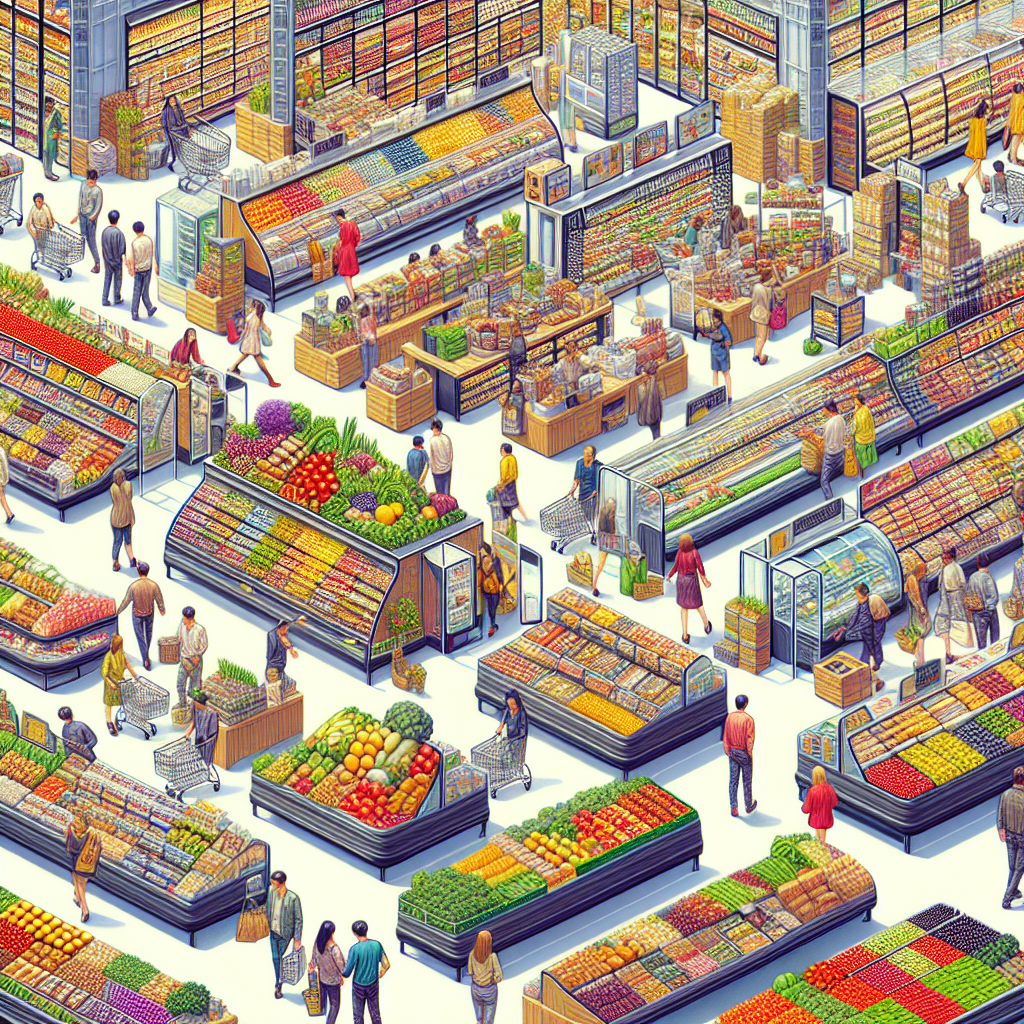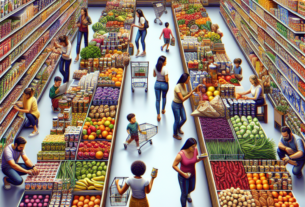Introduction
The grocery retail industry is constantly evolving to meet the changing preferences and demands of consumers. With advancements in technology, shifts in consumer behavior, and the rise of e-commerce, grocery retailers are facing new challenges and opportunities. In this report, we will explore how grocery retailers are adapting to changing consumer preferences, including trends, challenges, and opportunities in the industry.
Current State of the Global Grocery Retail Industry
According to a report by CulinaryCoverage.com, the global grocery retail industry is projected to reach $12 trillion by 2025. The industry is experiencing steady growth, driven by factors such as population growth, urbanization, and rising disposable incomes. Traditional brick-and-mortar stores still dominate the market, but e-commerce is rapidly gaining traction, with online grocery sales expected to double by 2025.
Market Share and Key Players
The grocery retail industry is highly competitive, with key players such as Walmart, Amazon, and Kroger leading the market. Walmart is the largest grocery retailer in the world, with a market share of 10%, followed by Amazon with 5% and Kroger with 3%. These companies are constantly innovating to stay ahead of the competition and meet the changing needs of consumers.
Financial Performance
Despite the challenges posed by the COVID-19 pandemic, the grocery retail industry has remained resilient. According to financial reports, major grocery retailers have seen an increase in sales and profits in recent years. For example, Walmart reported a 7% increase in sales in 2024, while Amazon saw a 12% increase in its grocery sales.
Trends in the Grocery Retail Industry
The grocery retail industry is experiencing several key trends that are shaping the future of the industry. These include:
1. Rise of E-commerce
E-commerce is one of the fastest-growing segments in the grocery retail industry. Consumers are increasingly turning to online shopping for convenience and accessibility. Major players like Amazon and Walmart are investing heavily in their e-commerce platforms to capture a larger share of the market.
2. Health and Wellness
Consumers are becoming more health-conscious and are seeking out healthier food options. Grocery retailers are responding to this trend by offering a wider range of organic, natural, and locally sourced products. Retailers are also investing in technology to provide consumers with more information about the products they are purchasing.
3. Sustainability
Sustainability is a growing concern for consumers, and grocery retailers are taking steps to reduce their environmental impact. Many retailers are implementing sustainable practices such as reducing food waste, using eco-friendly packaging, and supporting local farmers and producers.
Challenges Facing Grocery Retailers
Despite the opportunities in the market, grocery retailers are facing several challenges that are shaping their strategies and operations. These challenges include:
1. Competition
Competition in the grocery retail industry is fierce, with traditional retailers facing increasing pressure from online players like Amazon. Retailers must differentiate themselves through innovation, customer service, and product offerings to stay competitive.
2. Supply Chain Disruptions
The COVID-19 pandemic exposed vulnerabilities in the grocery supply chain, leading to disruptions in product availability and pricing. Retailers are working to strengthen their supply chains and implement contingency plans to prevent future disruptions.
3. Changing Consumer Preferences
Consumer preferences are constantly evolving, making it challenging for retailers to keep up with shifting trends. Retailers must stay agile and responsive to changing consumer demands to remain relevant in the market.
Opportunities for Grocery Retailers
Despite the challenges, there are several opportunities for grocery retailers to capitalize on in the changing market. These opportunities include:
1. Personalization
Personalization is becoming increasingly important in the grocery retail industry. Retailers can leverage data analytics and technology to personalize the shopping experience for customers, offering tailored recommendations and promotions based on their preferences.
2. Omnichannel Retailing
Omnichannel retailing allows retailers to provide a seamless shopping experience across multiple channels, including online, mobile, and in-store. By integrating their online and offline operations, retailers can reach a wider audience and meet the diverse needs of consumers.
3. Innovation
Innovation is key to staying ahead in the competitive grocery retail industry. Retailers can innovate by introducing new products, services, and technologies that enhance the shopping experience for customers. By staying at the forefront of innovation, retailers can attract and retain loyal customers.
Future Outlook
The future of the grocery retail industry looks promising, with continued growth and innovation on the horizon. Retailers that are able to adapt to changing consumer preferences, embrace technology, and prioritize sustainability will be well-positioned to succeed in the evolving market.
In conclusion, the grocery retail industry is undergoing significant changes as it adapts to shifting consumer preferences and market dynamics. By embracing trends, addressing challenges, and seizing opportunities, grocery retailers can position themselves for success in the future market landscape.



